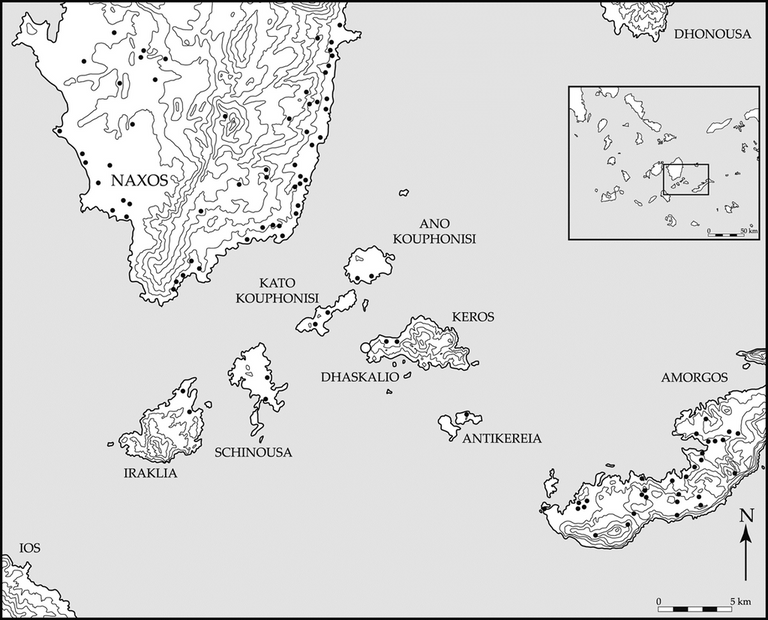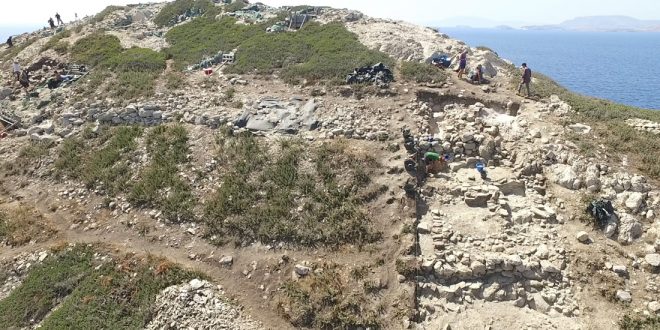This story is at Anne-Marie de Grazia's web site – go to https://www.q-mag.org/tiny-islet-close-to-naxos-reveals-4600y-old-sanctu… … an uninhabited island 10km from Naxos in the Aegean has a 4600 structure that is likened by archaeologists to a sanctuary. Quite what that might mean in real life is one of those imponderables as sacntuary and ritual are often used when people don't really know what the function of something might be. It is however, some kind of monument – and specifically a monument that was meant to be seen by mariners as they plied the waters around the Agean Sea. Laurence has gone somewhat further and wondered if there has been a steep change in sea levels and the sanctuary at one time might have been closer to Naxos. In mainstream thinking sea levels have not gone up or down too much since 5000 years ago (with some evidence of fluctuation towards the end of the Third millennium, at the end of the Second millennium, and in the Iron Age (with a definite climatic correspondence kicking in). However, sea levels in the Mediterranean do appear to fluctuate on a regular basis for reasons unconnected with global sea level change. That is all I can say on that score. What I found significant was the fact it is called a pyramidal construct – made of gleaming white marble (when it was built). The time period, at 4600 years ago, corresponds exactly with the building of the great pyramids in Egypt (faced with blocks of white limestone on a plateau overlooking the Nile valley). They appear to reflect the same phenomenon – something pyramidal in the natural environment. As such, one may note that white is the colour of light at night and the zodiacal lights are pyramidal in shape. Clube and Napier, back in the 1990s, speculated that the zodiacal lights were much more prominent in the third millennium BC as a result of lots of debris in the Taurid complex that could be seen along the line of the ecliptic (leading towards the zodiacal lights which were pyramidal in shape and form). Pyramids in the Greek islands and pyramids in Egypt might just be coincidence but we have Britain's very own pyramid, Silbury Hill. It is a rather nondescropt monument in the modern world as it has been flattened at the top by various attempts to excavate what was thought to be a giant barrow with a rich burial – and it is covered in grasses and vegetation. Back in the day, it was constructed around 4600 years ago, it was a different kettle of fish – as it was covered in chalk blocks, gleaming white from a distance. An actual similar monument as featured on the island near Naxos and the pyramids in Egypt – but constructed of earth and rubble and topped with blocks of chalk rock. Is that a coincidence?

The sanctuary in the Aegean was made from 7000 tons of white marble that had to be transported from Naxos. An intricate drainage system covers the whole island and stone stairs take visitors from the shore to the summit. See also www.arch.cam.ac.uk/research/projects/keros/keros-naxos-seaways-2015-2018 and National Geographic also has a You Tube video on the same subject (see https://www.youtube.com/watch?v=s2sCEX3b2pc and www.keeptalkinggreece.com/2018/01/24/keros-pyramid-island-aegean-excavat…).

